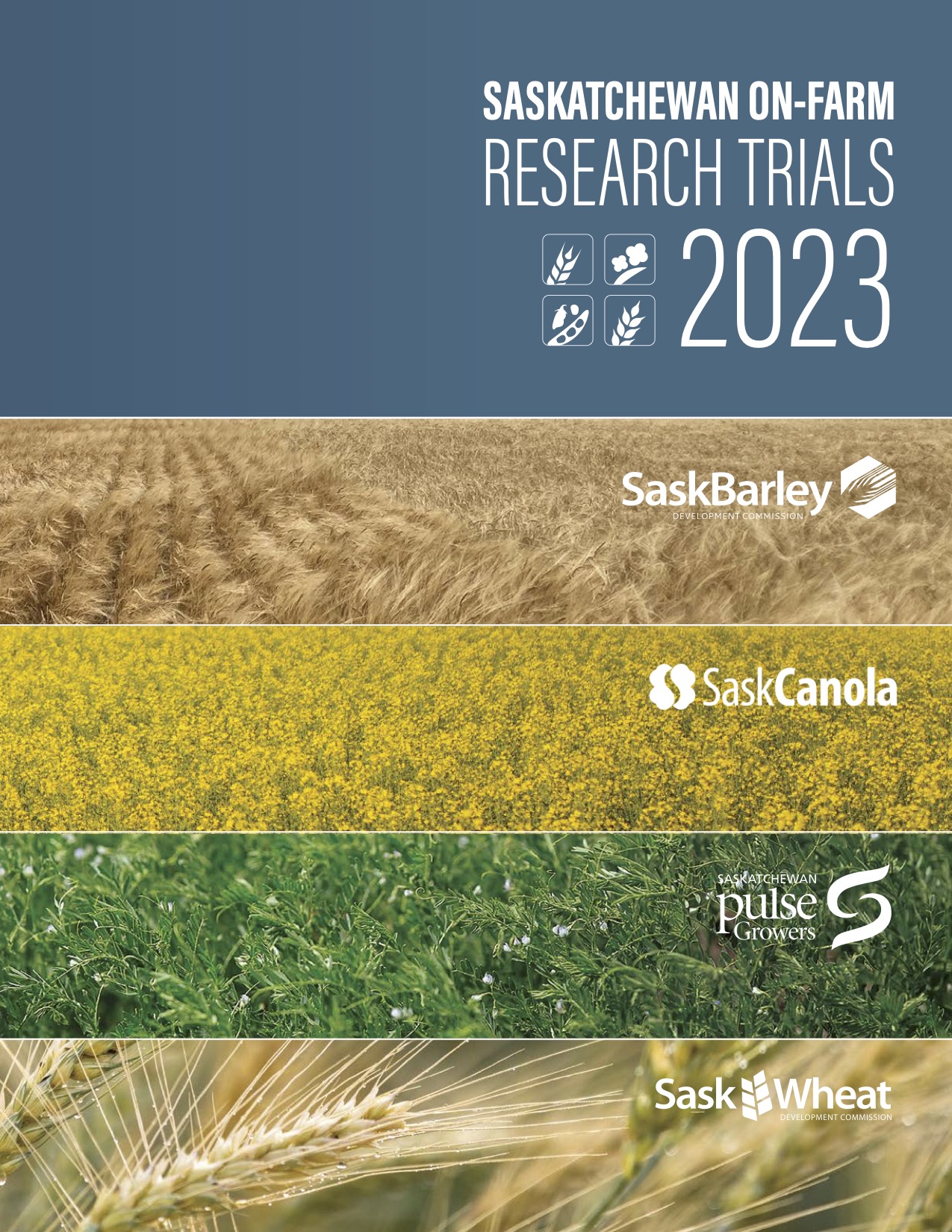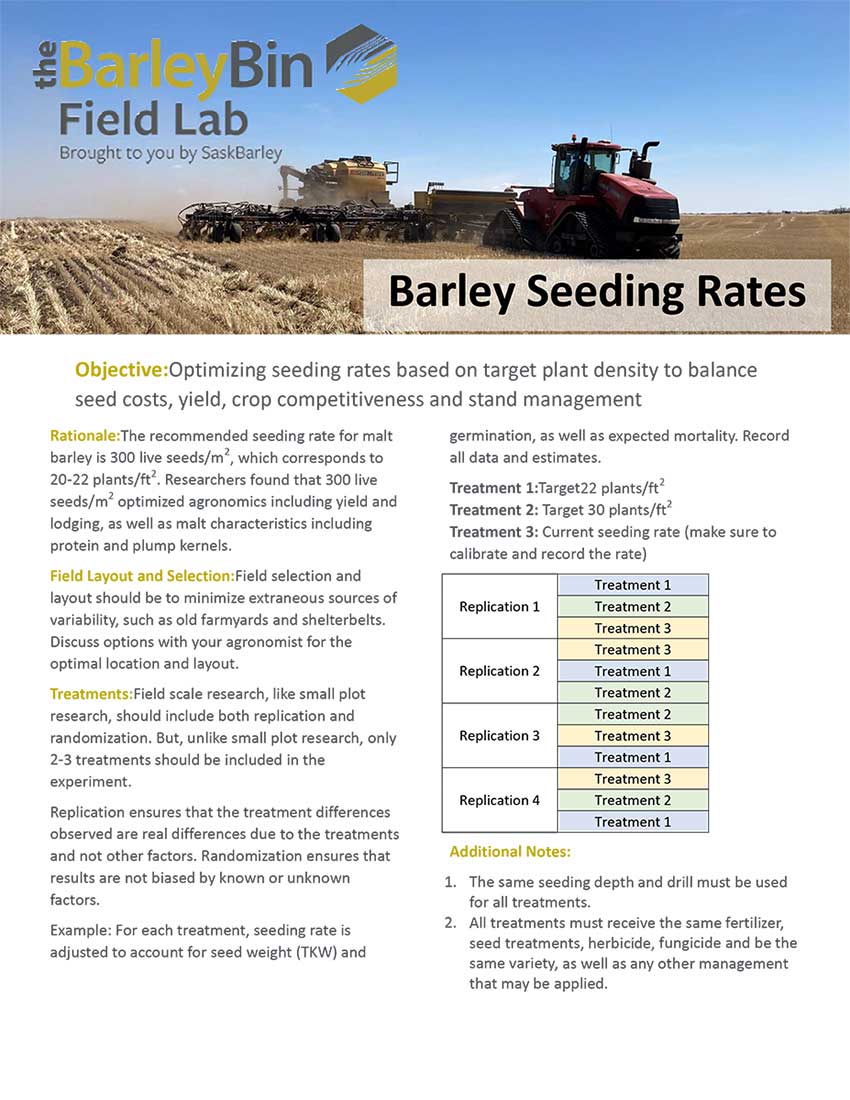Dodsland Trial Results
Summary:
Higher barley seeding rate increased plant density (P<0.01). Seedling mortality was significantly higher with variable seeding rate than with the flat rates which had consistent seedling mortality. We were not able to detect a significant difference in yield, protein, or plumps and thins with increased seeding rates. However, plant height and test weight decreased significantly with seeding rates.
Economics:
The effect of seeding rate on yield was not significant, thus the yield difference between treatments is zero. Net profit declined with seeding rate.
Luseland Trial Results
Summary:
Higher barley seeding rate did not significantly affect plant height, yield, test weight, or percent thins under these trial conditions. However, protein was significantly lower and percent plumps significantly higher in the low compared to the standard seeding rate.
Economics:
The effect of seeding rate on yield was not significant, thus the yield difference between treatments is zero. Net profit declined with seeding rate.
Barley Seeding Rates Protocol
Objective
Optimizing seeding rates based on target plant density to balance seed costs, yield, crop competitiveness and stand management.
Rationale
The recommended seeding rate for malt barley is 300 live seeds/m², which corresponds to 20-22 plants/ft². Researchers found that 300 live seeds/m² optimized agronomics including yield and lodging, as well as malt characteristics including protein and plump kernels. Applying these small-plot results at field scale allows producers to fine-tune based on seeding equipment, soil zone and management practices.
Treatments and Methodology
The treatments were replicated four times and applied in randomized strips. All plots were managed the same agronomically (apart from seeding rates) including seeding date, variety, seeding depth, seed treatment, and pesticide application.
Actual seeding rates for each treatment varied depending on the producers needs and current rates. On request, an additional treatment of a variable seeding rate with adjustments for landscape position (knoll, mid-slope, and depression), was applied.
Yield was determined for each plot separately by weighing with a weigh wagon or grain cart with scale. Grain samples were collected from each plot separately for post-harvest quality analysis consistent with malting barley quality analyses.
Treatment 1: Target 250 seeds/m2 – Reduced rate
Treatment 2: Target 300 seeds/m2 – Standard rate
Treatment 3: Target 350 seeds/m2 – High rate
Rep 1: Treatment 2, Treatment 1, Treatment 3
Rep 2: Treatment 1, Treatment 3, Treatment 2
Rep 3: Treatment 3, Treatment 2, Treatment 1
Rep 4: Treatment 2, Treatment 3, Treatment 1
Data collected: Soil and seed testing data, crop stand density, height, lodging, maturity, yield, grain quality.



